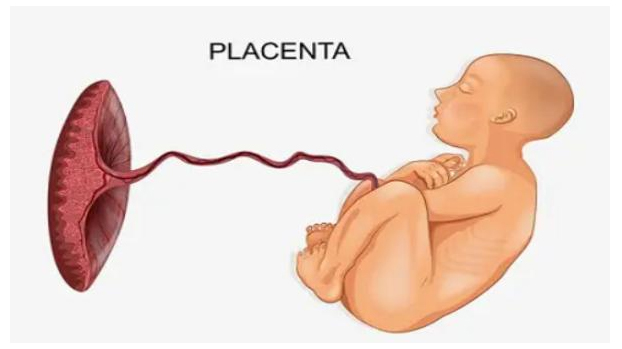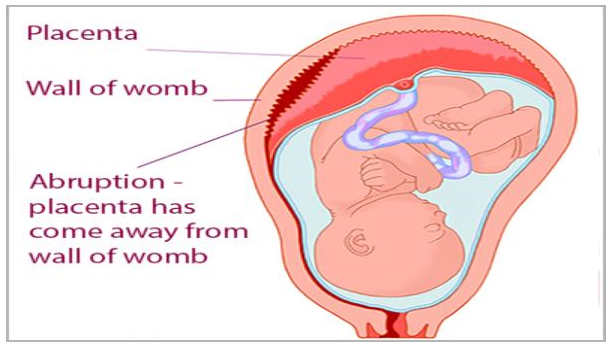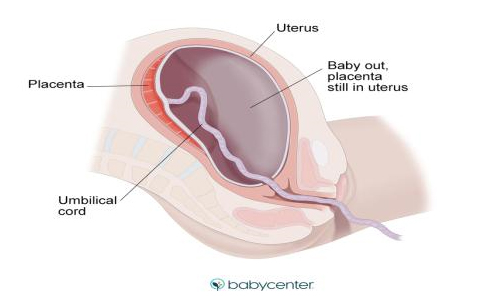
18
Nov
The Ultimate Guide to Placenta During Pregnancy
If you're expecting a child, you might be curious about what the placenta does and how it is affected. Learn more about this vital organ that connects the mother and the baby.

What is the function of the placenta?
The placenta is an organ that develops in the uterus during the pregnancy. This structure provides oxygen and nutrients to your growing embryo while also eliminating waste from his or her blood. The placenta attaches to the uterine wall, and your baby's umbilical cord emerges from it. The organ is normally linked to the uterus on the top, side, front, or back. In rare cases, the placenta and the uterus may link in the bottom region of the uterus. When this happens, a low-lying placenta develops (placenta previa).
What factors affect placental health?
Several factors can influence the health of the placenta during pregnancy, some of which are under your control and others which are not. Consider the following scenario:

What is the function of the placenta?
The placenta is an organ that develops in the uterus during the pregnancy. This structure provides oxygen and nutrients to your growing embryo while also eliminating waste from his or her blood. The placenta attaches to the uterine wall, and your baby's umbilical cord emerges from it. The organ is normally linked to the uterus on the top, side, front, or back. In rare cases, the placenta and the uterus may link in the bottom region of the uterus. When this happens, a low-lying placenta develops (placenta previa).
What factors affect placental health?
Several factors can influence the health of the placenta during pregnancy, some of which are under your control and others which are not. Consider the following scenario:
- Age of the mother
Older women, particularly those over the age of 40, are more likely to have placental problems.
Break in water before labor
The amniotic sac is a fluid-filled membrane that covers and cushions your baby during pregnancy. If the sac leaks or tears before labour begins, sometimes known as your water breaking, you run the risk of certain placental issues.
Break in water before labor
The amniotic sac is a fluid-filled membrane that covers and cushions your baby during pregnancy. If the sac leaks or tears before labour begins, sometimes known as your water breaking, you run the risk of certain placental issues.
- High blood pressure
High blood pressure may have an effect on your placenta.
- Pregnancy with twins or other multiples
You may be more prone to some placental difficulties if you're expecting more than one child.
Disorders of blood clotting
Any illness that affects or makes your blood more likely to clot increases your risk of certain placental problems.
Disorders of blood clotting
Any illness that affects or makes your blood more likely to clot increases your risk of certain placental problems.
- Surgery of the uterus in the past
If you've had previous uterus surgery, such as a C-section or fibroids surgery, you're more prone to develop specific placental problems.
- Problems with the placenta in the past
If you've had a previous pregnancy with a placental problem, your chances of having one again are increased.
- Use of Substance
Women who smoke or take cocaine during pregnancy are more likely to have certain placental issues.
- Abdominal Trauma
A fall, car accident, or other form of damage to your abdomen raises the risk of the placenta prematurely detaching from the uterus (placenta abruption).
What are the most prevalent complications with the placenta?
Placental abruption, placenta previa, and placenta accreta are all the possible placental problems during pregnancy. A lot of vaginal bleeding might occur as a result of these disorders. After birth, a retained placenta could be an issue. Here's what you need to know about these circumstances:
What are the most prevalent complications with the placenta?
Placental abruption, placenta previa, and placenta accreta are all the possible placental problems during pregnancy. A lot of vaginal bleeding might occur as a result of these disorders. After birth, a retained placenta could be an issue. Here's what you need to know about these circumstances:
- Placenta abruption
Placental abruption occurs when the placenta pulls away from the uterus' inner wall, either partially or completely, before delivery. You may bleed extensively as a result, depriving the baby of oxygen and nourishment. A placenta abruption could result in an emergency situation requiring an early birth.


- Placenta previa
This syndrome occurs when the placenta partially or fully covers the cervix, the uterus's exit. Placenta previa is more common early in pregnancy and may go away as the uterus enlarges.
During pregnancy or delivery, a placenta previa can cause excessive vaginal bleeding. How this issue is managed depends on the amount of bleeding, whether it stops, how far along you are in your pregnancy, the position of the placenta, and your and your baby's health. Your doctor may recommend a C-section if placenta previa is still present late in the third trimester.
.jpg)
During pregnancy or delivery, a placenta previa can cause excessive vaginal bleeding. How this issue is managed depends on the amount of bleeding, whether it stops, how far along you are in your pregnancy, the position of the placenta, and your and your baby's health. Your doctor may recommend a C-section if placenta previa is still present late in the third trimester.
.jpg)
- Placenta accreta
The placenta frequently separates from the uterine wall after birth. In placenta accreta, a portion or all of the placenta remains attached to the uterus. This syndrome develops when the placenta's blood vessels and other parts grow too far into the uterine wall. This can result in significant blood loss during delivery.
The placenta might enter the uterine muscles or develop through the uterine wall in more aggressive situations. Your doctor will most likely advise you to have a C-section and then have your uterus removed.
The placenta might enter the uterine muscles or develop through the uterine wall in more aggressive situations. Your doctor will most likely advise you to have a C-section and then have your uterus removed.
- Retained placenta
When the placenta isn't released within 30 minutes of labour, it's called a retained placenta. A retained placenta can happen when the placenta is stuck behind a partially closed cervix or when the placenta is still attached to the uterine wall. If left untreated, a retained placenta can cause significant infection or life-threatening blood loss.

Signs and symptoms of a placental problem
If you have any of the following symptoms during pregnancy, you should talk to your doctor.

Signs and symptoms of a placental problem
If you have any of the following symptoms during pregnancy, you should talk to your doctor.
- Vaginal bleeding
- Abdominal pain
- Back pain
- Uterine contractions
What can be done to lower the chances of having a placental problem?
The majority of placental issues are unavoidable. You may, however, take precautions to ensure a safe pregnancy:
The majority of placental issues are unavoidable. You may, however, take precautions to ensure a safe pregnancy:
- Throughout your pregnancy, see your doctor on a routine basis
- Manage any health issues, such as high blood pressure, with the help of your health care professional
- Do not smoke or use drugs
- Before opting for an elective C-section, talk to your doctor about the risks
If you've had a previous pregnancy with a placental problem and are planning another, talk to your doctor about strategies to lessen your chances of encountering the problem again. Also notify your doctor if you've had uterine surgery in the past. Throughout your pregnancy, your health care provider will keep a close eye on you.
What method is used to deliver the placenta?
During the third stage of labour, if you deliver your baby vaginally, you'll also deliver the placenta vaginally.
Mild contractions will continue after you've given birth. To keep uterine contractions going and prevent postpartum bleeding, your health care practitioner may provide oxytocin (Pitocin). Massaging your lower belly to urge your uterus to contract and evacuate the placenta is another option. It's possible that you'll be asked to push again to deliver the placenta.
If you undergo a C-section, your doctor will remove the placenta from your uterus as part of the process. The placenta will be examined by your doctor to ensure that it is healthy. To avoid bleeding and infection, any residual fragments must be removed from the uterus. Inquire about the placenta if you're interested. Families in certain cultures bury the placenta in a designated location, such as the backyard.
Consult your health care practitioner if you have any questions about the placenta or placenta complications during pregnancy. He or she can assist you in better understanding the role of the placenta during your pregnancy.
What method is used to deliver the placenta?
During the third stage of labour, if you deliver your baby vaginally, you'll also deliver the placenta vaginally.
Mild contractions will continue after you've given birth. To keep uterine contractions going and prevent postpartum bleeding, your health care practitioner may provide oxytocin (Pitocin). Massaging your lower belly to urge your uterus to contract and evacuate the placenta is another option. It's possible that you'll be asked to push again to deliver the placenta.
If you undergo a C-section, your doctor will remove the placenta from your uterus as part of the process. The placenta will be examined by your doctor to ensure that it is healthy. To avoid bleeding and infection, any residual fragments must be removed from the uterus. Inquire about the placenta if you're interested. Families in certain cultures bury the placenta in a designated location, such as the backyard.
Consult your health care practitioner if you have any questions about the placenta or placenta complications during pregnancy. He or she can assist you in better understanding the role of the placenta during your pregnancy.






